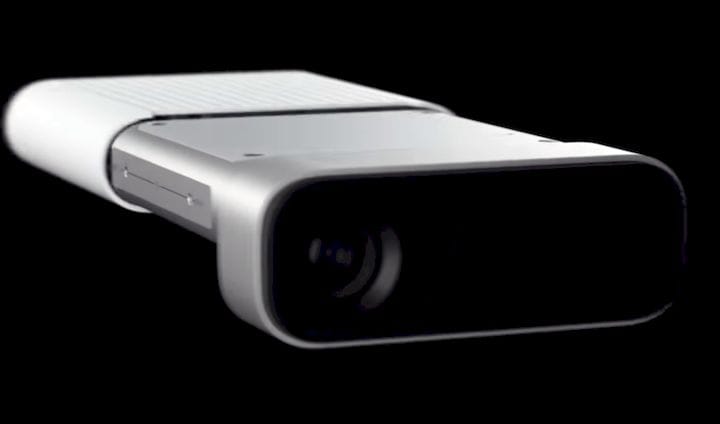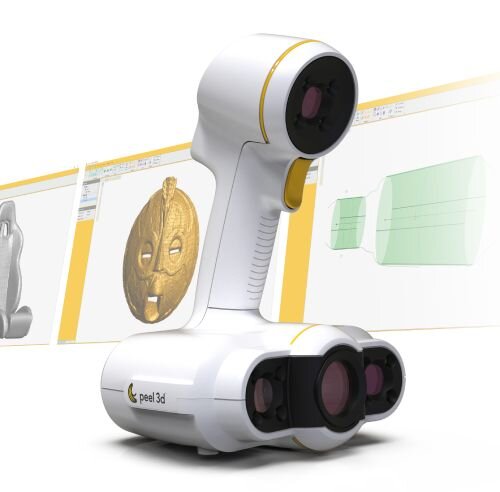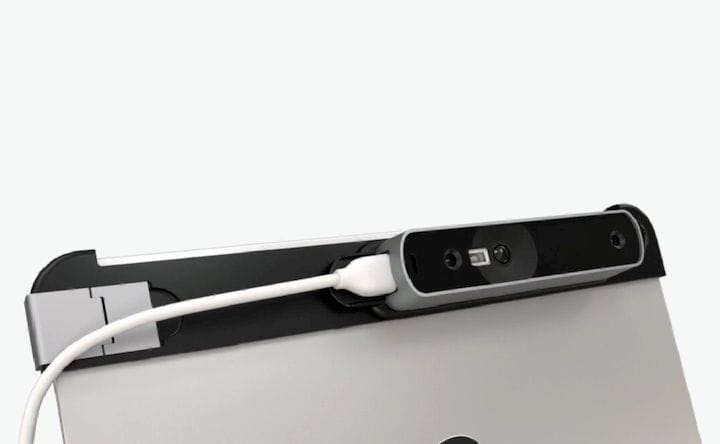![Microsoft’s upcoming Azure Kinect device [Source: Microsoft]](https://fabbaloo.com/wp-content/uploads/2020/05/image-asset_img_5eb09586265bb.jpg)
Microsoft announced a new version of their handheld 3D scanner, and it may have some implications for 3D printing.
This is a bit strange, as Microsoft had been marketing the original Kinect and its derivatives for some time. The Kinect had been designed for use as a kind of unusual input device for gaming. You would wave your arms in front of the device and these movements would be mapped into a virtual reality game, perhaps swinging a broadsword around.
But Microsoft smartly distributed a development kit with the Kinect, allowing third parties to cook up any kind of application they could imagine that used the same hardware. As you have no doubt guessed by now, some developed 3D scanning systems using the Kinect as a sensor.
This kickstarted a wave of inexpensive 3D scanning solutions that used not only the Kinect, but other types of sensors.
But then something happened: Microsoft decided to stop making the Kinect entirely, seemingly abandoning that product line. Those companies that had created 3D scanning solutions moved on to using other sensors — usually more powerful than the original Kinect. We even had a story about what to do after the Kinect died.
Well, it turns out Microsoft has resurrected the Kinect and it’s not a zombie at all. The new “Azure Kinect DK” will take over where the original Kinect left off, and go much, much farther.
Microsoft describes the Azure Kinect DK as:
“Azure Kinect DK is a developer kit and PC peripheral that combines our best artificial intelligence (AI) sensors with SDKs and APIs for building sophisticated computer vision and speech models.”
In fact, the Azure Kinect hardware includes a 12 mpixel color imaging system, 7 audio channels and most importantly for us, a 1 mpixel depth camera. This is more than three times as many pixels as the original Kinect’s depth camera.
![Camera systems on the upcoming Azure Kinect device [Source: Microsoft]](https://fabbaloo.com/wp-content/uploads/2020/05/image-asset_img_5eb095866c567.jpg)
Another very interesting feature of the new hardware is that it is designed to be used in arrays, which could dramatically improve the 3D resolution and enable applications one can only imagine. Here we see the back and side of the device where there are bolt holes visible (“M2.5 x 6”), suggesting the device is intended to be mounted on racks or on mobile platforms.
![Mounting spots on the upcoming Azure Kinect device [Source: Microsoft]](https://fabbaloo.com/wp-content/uploads/2020/05/image-asset_img_5eb09586bd027.jpg)
Microsoft Azure Kinect Development Kit
Microsoft is marketing this as a development kit, hence the “DK” in the product name. But that means they are expecting third parties to invent entirely new uses for the “AKDK” system, and I’m hoping — as are others — that someone develops an improved 3D scanning system using the new hardware.
I found the Kinect 3D scanning solution to be decent for simple and casual 3D scanning scenarios. No, it did not produce engineering quality, dimensionally accurate 3D scans. But they were useful for plenty of situations, and for the low cost of the original Kinect, it was great value.
Now it appears we may see something similar happen, but ending up with more powerful AKDK-based 3D scanning solutions. The companies that launched with the original Kinect may suddenly find a new sensor system that can plug into their now-mature 3D scanning software.
Azure Kinect Timeline
Of course, we’ll have to wait for developers to build 3D scanning software around the new hardware, but that is now inevitable. The scanning solutions will no doubt be quite a bit more powerful than what we saw with the original Kinect, as well.
When will all this happen? I don’t know, as the development cycle for 3D scanning products varies considerably. It depends a lot on how much change is required to integrate the AKDK into existing products.
But we do know that the AKDK is set for launch pre-orders beginning on June 27, only a few days away. Microsoft has priced this kit at only US$399, a good price for a powerful 3D scanner.
Via The Verge











